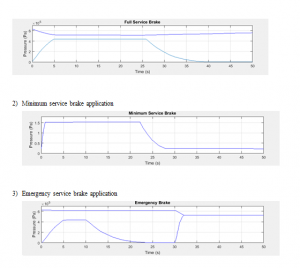ELECTRO PNEUMATIC BRAKING SYSTEM OF A CAR UNIT Case Study Solution
Braking system used in early cars of train:
The traditional braking system that were used in train unit car braking system for a long time in the past used pneumatic air valves for braking purpose which were of length equal to the length of train.That conventional braking mechanism consisted of braking pipe which was basically used for transferring air to reservoirs located on each of the cars of a train.
The brake applies when braking pipe and car braking mechanism is charged with air inside. This method of braking the cars of a train remained very successful at that time and was applied on most of the train car braking systems.
Cause of obsoleting the traditional braking system:
In spite of its usefulness, this conventional braking system had some major flaws residing in it. One of the greatest problematic concerns with this sort of braking mechanism is its braking reaction time.
On average it used to take two to three minutes to completely fill in and expel out the air from the braking air valves which eventually caused the brake of a car to brake with slow reaction time.Sometimes it is very problematic when this type of braking system is applied in a train which has more number of cars connected with it. So the timing in braking in each of the cars is uneven and not balanced.
Advent of electro pneumatic braking system for carsof train:
To mainly overcome this flaw of conventional braking system and to make the braking system of cars in train more effective, responsive and accurate, the electronically controlled pneumatic (ECP) braking system came into being.
It has advanced technological controls which allow the braking air valves to fill in and escape out at a quicker rate and also providing each of the individual car’s braking status to the operator accurately.The cars of train in which ECP is installed have train line cables along side with the braking pipe which covers each of the cars attached to the train.
Usefulness of ECP braking system for cars of train:
On comparison, ECP braking system has greater benefits than conventional braking system. Now because of ECP braking system, all the cars attached and running with a train receives the braking action command in the form of electrical signals at the same time.
The brakes are applied on each of the carsuniformly and instantaneously i.e. because the ECP has sensors of distance, speed and time also, it provides the necessary brake pressure amount on each car of a train. Due toECP braking system now the braking becomes smart and efficient which results in lesser risk of health and property with smart and easy operation.
ELECTRO PNEUMATIC BRAKING SYSTEM OF A CAR UNIT Harvard Case Solution & Analysis
Possible practical cases for ECP brakingsystemof car of a train:
Following are the three different possible braking scenarios which are simulated under a defined time for testing purpose and for observing the pressure in Pascal of ECP braking system of unit single car of a train:
- Full service brake application
The above mentioned figures of the three situations show the simulatedgraphs patterns of ECP braking system of a single car of train...............
This is just a sample partial case solution. Please place the order on the website to order your own originally done case solution.














